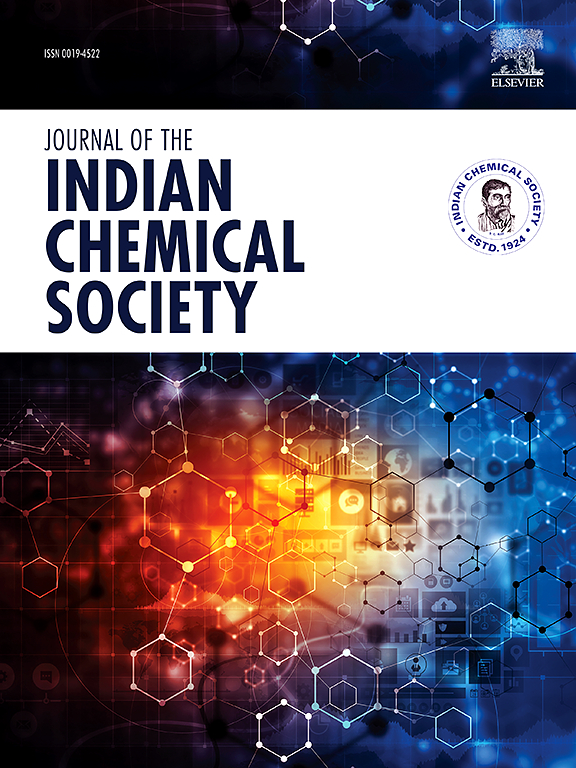合成环保型防污涂料PDMS-X,防止海洋生物污的附着
IF 3.2
4区 化学
Q2 CHEMISTRY, MULTIDISCIPLINARY
引用次数: 0
摘要
海洋生物污染是指浸入海水的材料表面聚集不需要的海洋微生物、动物和植物。海洋生物污染现象对工业和海洋设施非常有害,因为它会减慢船舶的速度,增加燃料消耗,导致二氧化碳排放。生物污垢会腐蚀金属和混凝土结构,阻塞发电厂的海水管道,并阻碍水产养殖区营养物质的交换。抑制海洋生物污染的最佳策略是涂覆防污或脱污成分。防污会对海洋生态造成不可逆转的破坏。同时,由于这种涂层的基本原理可以防止海洋微生物的粘附或附着,因此污垢释放更加环保。本文研究了二氧化钛和氧化石墨烯(GO)涂层复合制备聚二甲基硅氧烷(PDMS)的新方法。XRD分析表明,涂层配方中TiO2的添加量高达3%,衍射峰移至2θ = 25.44°,证实了纳米TiO2的锐钛矿结构。在纳米尺度上,AFM结果中的表面粗糙度也随着TiO2的加入而增加。同时,从接触角测量来看,TiO2-GO的插层对样品的疏水性能没有影响,在115-117°范围内。测试现场表明,PDMS-TiO2-GO涂层可以应用于各种基材,包括玻璃纤维,丙烯酸,铁,木材和混凝土。除丙烯酸基外,添加TiO2和GO降低了所有基质的生物污染覆盖率。在海水中浸泡8周后,附着力好、生物结垢率低(3%)的木质基材的涂层效果最好。本文章由计算机程序翻译,如有差异,请以英文原文为准。
Synthesis of environmental-friendly fouling release coating, PDMS-X, to prevent the attachment of marine biofouling
Marine bio-fouling refers to the collection of undesired marine microbes, animals, and plants on the surface of materials immersed in seawater. The marine bio-fouling phenomenon is very detrimental to industrial and marine facilities because it can slow down the speed of ships and increase fuel consumption, resulting in CO2 emissions. Biofouling corrodes metal and concrete structures, blocks power plant seawater pipes, and impedes the exchange of nutrients in aquaculture areas. The best strategy for inhibiting marine bio-fouling is coating with antifouling or fouling-release components. Antifouling can cause irreversible damage to marine ecology. Meanwhile, the fouling release is more environmentally friendly because the basic principle of this coating prevents the adhesion or attachment of marine microorganisms. In this paper, the investigation of novel synthetization of fouling release polydimethylsiloxane (PDMS) incorporated with TiO2 and graphene oxide (GO) coating is reported. The XRD analysis indicated the addition of TiO2 in the coating formula up to 3 % with the diffraction peak shifted to 2θ = 25.44° confirming the anatase structure of nanocrystal TiO2. The surface roughness in the AFM result also increases in the nm scale by adding TiO2. Meanwhile, from the contact angle measurement, the intercalation of TiO2-GO did not influence the sample's hydrophobic properties with a value in the range of 115–117°. The test field shows that PDMS-TiO2-GO coating can be applied to various substrates, including fibreglass, acrylic, iron, wood, and concrete. Adding TiO2 and GO reduced the biofouling coverage in all substrates except for the acrylic-based. The best coating application is in the wood substrate with good adhesion properties and low biofouling coverage (3 %) after being immersed in the sea for eight weeks.
求助全文
通过发布文献求助,成功后即可免费获取论文全文。
去求助
来源期刊
CiteScore
3.50
自引率
7.70%
发文量
492
审稿时长
3-8 weeks
期刊介绍:
The Journal of the Indian Chemical Society publishes original, fundamental, theorical, experimental research work of highest quality in all areas of chemistry, biochemistry, medicinal chemistry, electrochemistry, agrochemistry, chemical engineering and technology, food chemistry, environmental chemistry, etc.

 求助内容:
求助内容: 应助结果提醒方式:
应助结果提醒方式:


